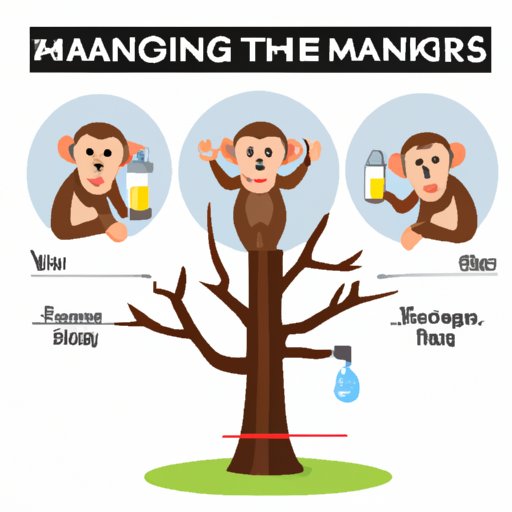
Introduction
Monkeypox is an infectious disease that has become a growing concern in recent years. It is a rare viral disease that is similar to human smallpox, but with a milder course and fewer fatalities. Monkeypox virus can cause an outbreak that can spread quickly and affect many people. Understanding how monkeypox can be contracted is important to prevent the spread of the virus. In this article, we will explore the various ways you can contract monkeypox and what you can do to prevent it.
Through Direct Contact with Infected Animals
Direct contact with infected animals is one of the most common ways that monkeypox can be contracted. This includes touching or handling animals that have the virus or their bodily fluids. In Africa, the virus is primarily spread through handling infected wild animals, such as monkeys, rats, squirrels, and other small mammals. Hunting, cooking, and eating these animals can put you at risk for infection.
Human to Human Contact
Another way that monkeypox can spread is through human to human contact. The virus can be transmitted through respiratory droplets, such as coughing or sneezing, or through contact with bodily fluids, such as blood, saliva, or pus from infected sores. High-risk activities that can lead to transmission include close contact with infected individuals, unprotected sex, and caring for sick patients.
Skin-to-Skin Contact
Skin-to-skin contact with an infected individual can also lead to monkeypox transmission. This means any skin contact with an infected person, including hugging, kissing, or touching infected skin. The virus can enter the body through breaks in the skin, such as cuts, abrasions, or insect bites. Infected individuals should be isolated until they are no longer contagious.
Exposure to Contaminated Objects
Monkeypox can also be contracted through exposure to contaminated objects. The virus can survive on surfaces for several hours. Examples of contaminated objects include bedding, clothing, towels, and shared household items. Touching these contaminated objects and then touching your face, mouth, or nose can lead to transmission. To prevent this, avoid sharing personal items and frequently wash your hands with soap and water.
Ingestion of Contaminated Food or Water
Ingestion of contaminated food or water is another way that monkeypox can be contracted. This occurs when food or water is contaminated with the virus. Examples of contaminated food include raw meat from infected animals, dish or utensils used by an infected person, and contaminated water from rivers or wells. It is essential to ensure that food and water are well-cooked and clean before consumption to prevent infection.
Occupational Exposure
Finally, occupational exposure can also lead to monkeypox transmission. Certain job roles put individuals at higher risk of contracting the disease, including healthcare workers, veterinarians, and laboratory workers who handle infected samples. These workers should take safety precautions, such as wearing personal protective equipment and practicing proper hygiene.
Conclusion
Preventing monkeypox transmission is crucial to avoid the spread of the disease. In this article, we have discussed the various ways that monkeypox can be contracted, including through direct contact with infected animals, human to human contact, skin-to-skin contact, exposure to contaminated objects, ingestion of contaminated food or water, and occupational exposure. It is essential to practice good hygiene, seek medical attention if you suspect you have contracted monkeypox, and take steps to prevent transmission.




